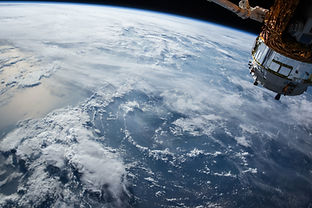

OVERSHOOT
What is climate overshoot?


In 2015 in Paris, the countries of the world agreed to limit global warming to well below 2 °C and to pursue efforts to limit it to 1.5 °C. In recent years, the lower goal has gained prominence, especially after the special report on global warming of 1.5 °C from the Intergovernmental Panel on Climate Change (IPCC).
A temporary breach of a warming goals is known as ‘overshoot’ - and its consequences have attracted growing attention.
As scientists and policy-makers explore the actions necessary to stay within 1.5 °C warming, most optimistic scenarios foresee overshoot by mid-century, potentially lasting several decades or more.
Indeed, in April 2022 the IPCC said “it is almost inevitable that we will temporarily exceed this [1.5 °C] temperature threshold but could return to below it by the end of the century.”
What are the risks
of climate overshoot?
Today’s global warming of about 1.1°C is already creating significant impacts.
The risks of overshooting the 1.5 °C goal will be felt across all the UN Sustainable Development Goals, with profound environmental and societal consequences. Beyond 1.5 °C there is a growing likelihood of “cascading and irreversible climate impacts”. By 2 °C warming, many human and natural systems would be under extreme stress, with some ecosystems struggling to survive.
At the same time, 1.5 °C and 2 °C are not absolute thresholds. Risks increase in line with the extent and duration of the overshoot. Every extra tenth of a degree and every extra decade of overshoot matter. This makes it all the more important to strive to reduce risks under all possible future conditions.



What are the approaches to reduce the risks of climate overshoot?
The primary means to combat climate change should remain the deep and rapid reduction of greenhouse gas emissions. Nevertheless, the full spectrum of potential ways to reduce climate risks should be understood and evaluated.
The Climate Overshoot Commission is examining three additional approaches. Just as with emissions reduction, these bring potential benefits, costs, limitations, and risks. They would affect people and regions differently and could be implemented poorly. They also raise issues for governance.
1/ Enhanced adaptation
Adaptation includes a range of existing and emerging measures to adjust to the impacts of climate change, in order to limit harm and maximise co-benefits. This has long been a part of international climate change policy. But given the increasing likelihood of overshoot, ways in which adaptation can be expanded and accelerated should be explored.
What are the bottlenecks that could be removed? What are the limits to adaptation? Better governance could also improve coordination of adaptation activities. Another issue is how to ensure that those who need to adapt have the resources and knowledge to do so.

2/ Carbon dioxide removal


Carbon dioxide removal (CDR) is a diverse set of nature-based and technological methods to capture excess carbon dioxide—the most important greenhouse gas—already in the atmosphere. The gas would then be stored in geological, terrestrial, or ocean reservoirs, or in products. Techniques include large-scale afforestation and reforestation, direct air capture, and enhanced ocean alkalinity. CDR is sometimes called “negative emissions technologies” or “greenhouse gas removal”.
The IPCC says CDR is “unavoidable” if humanity is to achieve net zero emissions due to difficult-to-reduce residual emissions, as well as a “key element” in achieving the Paris Agreement goals. In fact, CDR will be necessary to achieve net negative emissions if global warming is to be reduced following a breach of temperature goals.
There are governance gaps in integrating CDR into climate change policy. For example, it is uncertain whether it can be increased at the scale assumed in some modelled scenarios. Some CDR techniques are not permanent. Planted trees might be cut down later, and stored carbon dioxide might leak. And it is unclear how to account for CDR in the reporting of emissions.
3/ Sunlight reflection methods
Sunlight reflection methods (SRM), also known as “solar radiation modification” or “solar geoengineering”, would do what the name suggests: reflect sunlight away from the planet to reduce temperatures. The most-researched technique—“stratospheric aerosol injection”—would introduce very small particles into the upper atmosphere. This appears able to reduce climate change, technically feasible, and relatively inexpensive, but brings new risks of its own and may have varying impacts on different regions. Another technique would aim to brighten clouds above the ocean. But SRM would counter climate change imperfectly and poses serious uncertainties, risks, and governance challenges.
The governance gaps for SRM are the most acute. How can it be researched and evaluated without distracting from essential reductions of greenhouse gas emissions? Who decides whether to undertake SRM and under which conditions? How could countries’ differences on this question be resolved?


Integration
Emissions reduction and these three additional approaches would operate in different ways and on different timelines. Emissions cuts are the only sure way to prevent future climate change, but are slow-acting and cannot reduce committed global warming. In contrast, CDR can lower atmospheric carbon dioxide levels and warming, but is also slow and currently expensive. Adaptation is now necessary but does not affect the climate and has limits. And SRM appears able to rapidly, inexpensively, but imperfectly reduce climate change. Together, these four approaches could complement one another. However, such an integrated response to climate overshoot would require systematic assessment and well-coordinated policy and action to reduce risks to people and ecosystems.

